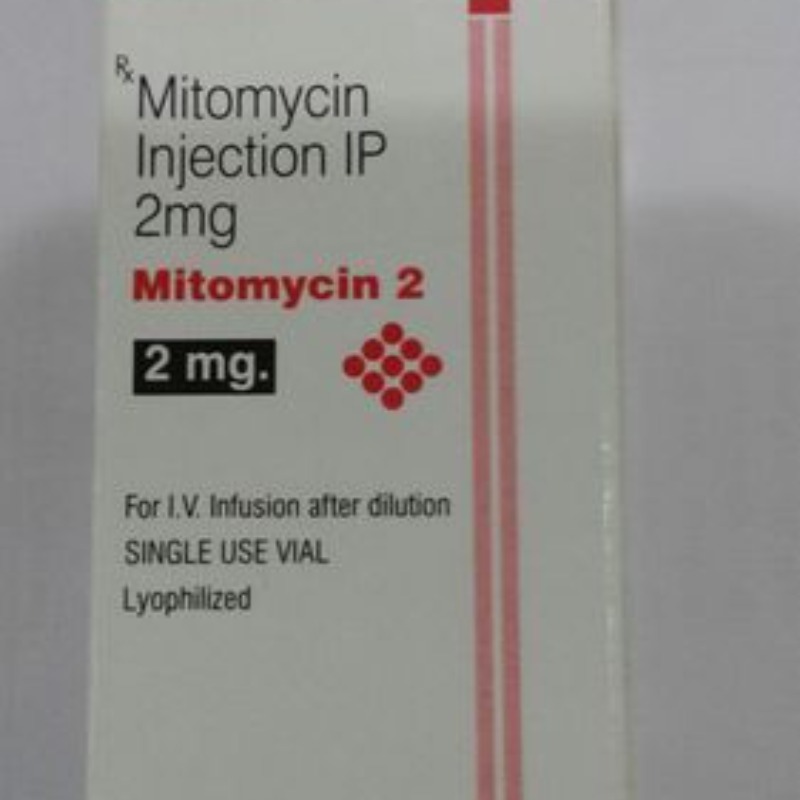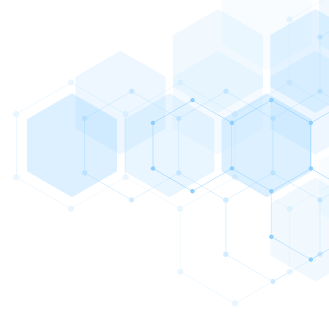DESCRIPTION
MECHANISM OF ACTION
• Isolated from the broth of Streptomyces caespitosus species.
• Acts as an alkylating agent to cross-link DNA, resulting in inhibition of DNA synthesis and function.
• Inhibits transcription by targeting DNA-dependent RNA polymerase.
• Bioreductive activation by NADPH cytochrome P450 reductase, NADH cytochrome B450 reductase, and DT-diaphorase to oxygen free radical
forms, semiquinone or hydroquinone species, which target DNA and inhibit DNA synthesis and function.
• Preferential activation of mitomycin-C in hypoxic tumor cells.
ABSORPTION
Not available for oral use and is administered only via the IV route.
DISTRIBUTION
Rapidly cleared from plasma after IV administration and widely distributed to tissues. Does not cross the blood-brain barrier.
INDICATIONS
1. Gastric cancer.
2. Pancreatic cancer.
3. Breast cancer.
4. NSCLC.
5. Cervical cancer.
6. Head and neck cancer (in combination with radiation therapy).
7. Superficial bladder cancer.
8. Anal cancer
DOSAGE RANGE
1. Gastric cancer: 10 mg/m2 IV every 8 weeks, as part of the FAM regimen.
2. Breast cancer: Usual dose in various combination regimens is 10 mg/m2 IV every 8 weeks.
3. Intravesicular therapy: Usual dose for intravesicular instillation is 40 mg administered in 20 mL of water.
DRUG INTERACTIONS
None well characterized.
SPECIAL CONSIDERATIONS
1. Use with caution in patients with abnormal liver function. Dose reduction is recommended in the setting of liver dysfunction.
2. Because mitomycin-C is a potent vesicant, administer slowly over 30–60 minutes with a rapidly flowing IV. Administer drug carefully, usually through a central venous catheter. Careful monitoring is necessary to avoid extravasation. If extravasation is suspected, immediately stop infusion, withdraw fluid, elevate extremity, and apply ice to involved site. May administer topical DMSO. In severe cases, consult a plastic surgeon.
3. Monitor complete blood cell counts on a weekly basis. Mitomycin-C therapy results in delayed and cumulative myelosuppression. Risk of myelosuppression is increased when used in combination with other myelosuppressive agents.
4. Monitor patients for acute dyspnea and severe bronchospasm following drug administration. Bronchodilators, steroids, and/or oxygen may help to relieve symptoms. Risk of pulmonary toxicity increased with cumulative doses of mitomycin-C > 50 mg/m2.
5. FIO2 concentrations in the perioperative period should be maintained below 50%, as patients receiving mitomycin-C concurrently with other anticancer agents are at increased risk for developing ARDS. Careful attention to fluid status is important.
6. Monitor for signs of hemolytic-uremic syndrome (anemia with fragmented cells on peripheral blood smear, thrombocytopenia, and renal dysfunction), especially when total cumulative doses of mitomycin-C are > 50 mg/m2.
7. Pregnancy category D. Breastfeeding should be avoided.
TOXICITY 1
Myelosuppression is dose-limiting, and cumulative toxicity with leukopenia is more common than thrombocytopenia. Nadir counts are delayed at about 4–6 weeks.
TOXICITY 2
Nausea and vomiting. U
sually mild and occur within 1–2 hours of treatment, lasting for up to 3 days.
TOXICITY 3
Mucositis is common but not dose-limiting. Observed within the first week of treatment.
TOXICITY 4
Potent vesicant. Extravasation can lead to tissue necrosis and chemical thrombophlebitis at the site of injection.
TOXICITY 5
Anorexia and fatigue are common.
TOXICITY 6
Hemolytic-uremic syndrome. Consists of microangiopathic hemolytic anemia (hematocrit < 25%), thrombocytopenia (< 100,000/mm3), and renal failure (serum creatinine > 1.6 mg/dL). Other complications include pulmonary edema, neurologic abnormalities, and hypertension. Rare event seen in < 2% of patients treated. May occur at any time during treatment but usually when cumulative doses > 50 mg/m2. In rare cases, syndrome can be fatal.
TOXICITY 7
Interstitial pneumonitis. Presents with dyspnea, non-productive cough, and interstitial infiltrates on chest X-ray. Occurs more frequently with total cumulative doses > 50 mg/m2.
TOXICITY 8
Hepatic veno-occlusive disease. Presents with abdominal pain, hepatomegaly, and liver failure. Occurs only with high-dose therapy in transplant setting.
TOXICITY 9
Chemical cystitis and bladder contraction. Observed only in the setting of intravesicular therapy.
SPECIFICATION


Login To Comment